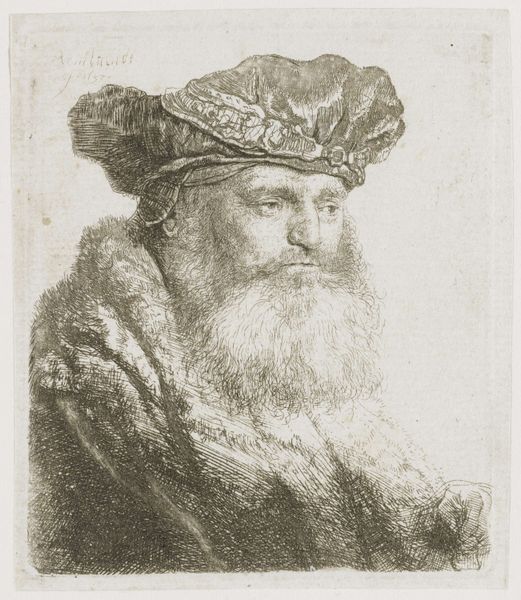
painting, oil-paint
#
portrait
#
narrative-art
#
baroque
#
painting
#
oil-paint
#
portrait drawing
#
genre-painting
#
realism
Copyright: Public domain
Editor: We're looking at "Head of a Scholar," an oil painting by Giovanni Domenico Tiepolo. It’s a really intriguing portrait, and the subject's face is so detailed. What jumps out to me is his elaborate headdress. How do you approach this work? Curator: Well, I'm drawn to consider how the materials contribute to its meaning. Look at the application of oil paint, the layering, creating such palpable textures in his beard and the fabric. Editor: It definitely emphasizes the physical presence of the scholar. Curator: Precisely. Consider the pigment itself, sourced and ground, likely by assistants or workshop members. This piece becomes an artifact not just of artistic vision, but of the labor and trade networks involved in its creation. And that elaborate headdress… what is it made of? Editor: It appears to be fabric and some type of trim. Maybe velvet or silk, based on the sheen. Curator: Exactly! These materials weren't readily accessible. Their inclusion speaks volumes about the subject’s status, and, further, Tiepolo’s access to and incorporation of these expensive goods in order to accurately execute his vision. How does that understanding shift your perception of the piece? Editor: It adds a layer of social commentary, definitely. The painting isn’t just a likeness; it’s about wealth, the display of knowledge, and the artist’s place in the commercial system. It makes me wonder who he was and how he could afford that type of clothing. Curator: And how Tiepolo leveraged those dynamics. What have we learned today? Editor: I see that the materials used and how they were acquired and crafted are crucial to the overall interpretation. The painting’s value is much more than just aesthetic. Curator: Indeed. Thinking materially brings us closer to the socio-economic context shaping both the artist and his subject.
Comments
No comments
Be the first to comment and join the conversation on the ultimate creative platform.













